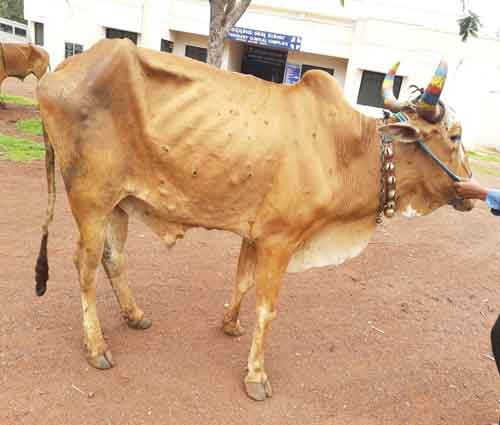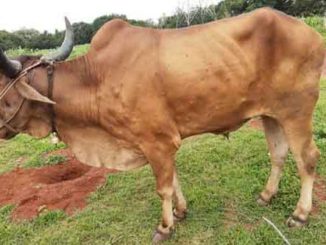Lumpy skin disease is an infectious, notifiable, re-emerging, non-zoonotic viral disease of cattle and water buffaloes caused by Capri pox virus of Pox viridae family. This virus produces acute and sub-acute disease manifesting as fever, depression, enlarged lymph nodes, and nodules on the skin. The earlier disease was confined to Africa, firstly seen as an epidemic in Zambia in 1929, but in the recent past few years, it has been reported in Bangladesh, China, India, Nepal, Bhutan, and Myanmar. An outbreak of disease is mostly related to direct transmission of the virus between animals, vector-borne -biological or mechanical and movement of unvaccinated cattle from infected areas to the disease-free areas.
Though the disease has low mortality, still there is a huge impact on the socio-economic growth of a country and major economic loss to poor farmers as it leads to reduced milk yield, poor quality of hides, infertility, abortions, and export restrictions due to high morbidity. The disease can be managed by using broad-spectrum antibiotics, ant-inflammatory, antipyretics, antiseptic and multivitamin drugs. Ethnoveterinary medicine, accessibility to clean water and soft feed and water is also appreciated. The recent spread of disease in various parts of Rajasthan and Gujarat threatened the animal husbandry department and it proved challenging to mitigate its outbreak. As it is important for veterinarians to investigate, diagnose and report the disease in field conditions, it is also important for them to educate farmers to adopt preventive measures to reduce further spread. A tentative diagnosis can be done on basis of clinical signs, outbreak history, and postmortem findings, and for laboratory confirmation samples like blood, scabs, and nodules tissue can be collected, these suspected clinical samples are to be forwarded to ICAR- NIHSAD, Bhopal for further diagnosis.

Preventive strategies like awareness campaigns, control of vectors, animal movement restrictions, farm disinfection, immunization, stamping out policy, diagnostic aids, and surveillance programs can be adopted. In awareness campaigns official and private, field and abattoir veterinarians, farmers, cattle traders, and artificial inseminators are targeted for this disease. Vector control by using insecticides and limiting breeding sites, like standing water, slurry, and manure. Movement of unvaccinated, sub-clinical, or unnoticed infected cattle prone to the risk of an outbreak in disease-free areas. Isolation and quarantine measures of 28 days to be followed when purchasing animals from other countries or exposed areas. Disinfection can be done with 2% sodium hydroxide, 4% sodium carbonate, 2% chloroform and formalin, 2% phenol, iodine and quaternary ammonium compounds.
Immunization is the best practical method to control the disease with homologous (Neethling strain) or heterologous live attenuated vaccine (Sheep/Goat pox vaccine) and commercially available as LumpyVax® and Bovivax LSD-N. In the case of ring-vaccination, the radius of protection and surveillance zones. Stamping-out policies can also be used to control the spread but are not practically proven effective and should be combined with vaccination. Surveillance programs are very effective to control the disease in case the outbreaks are reported in disease-free regions, where cattle are not yet vaccinated.





Be the first to comment